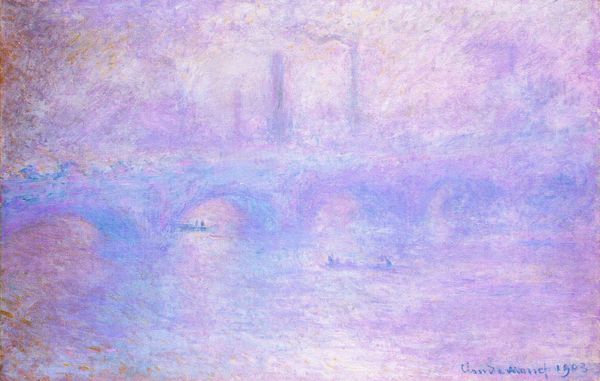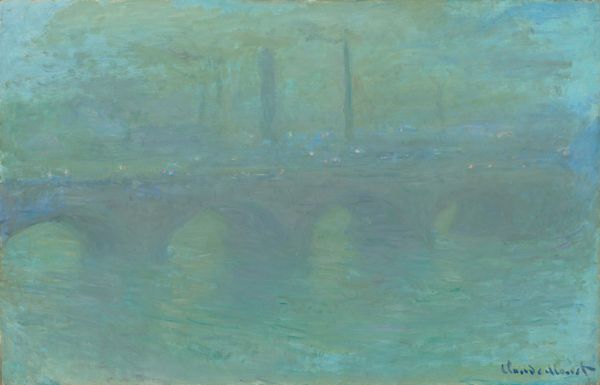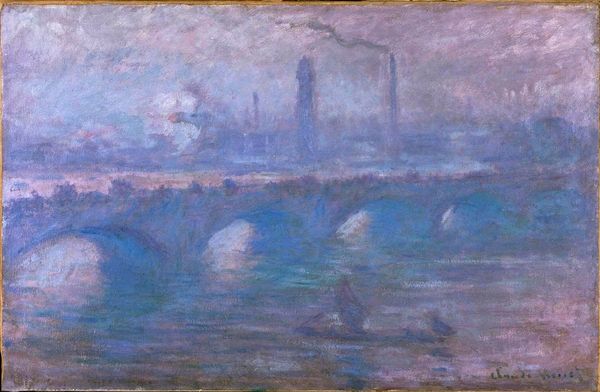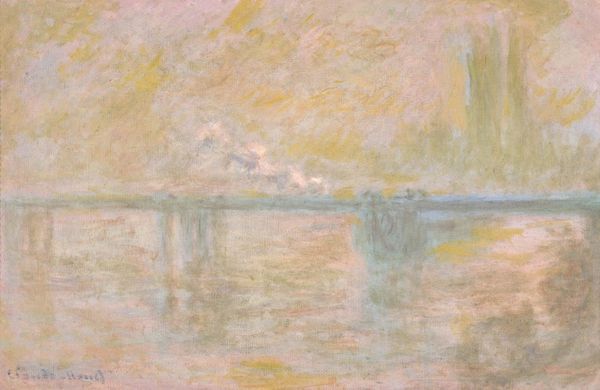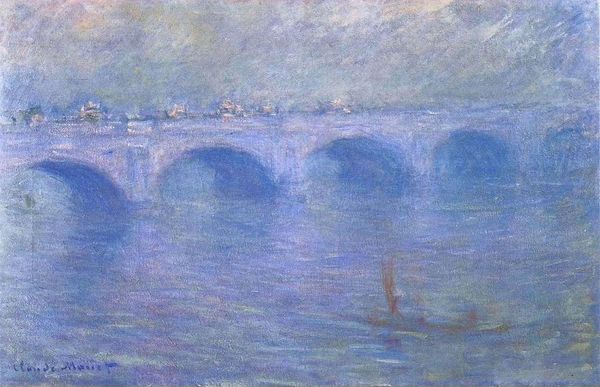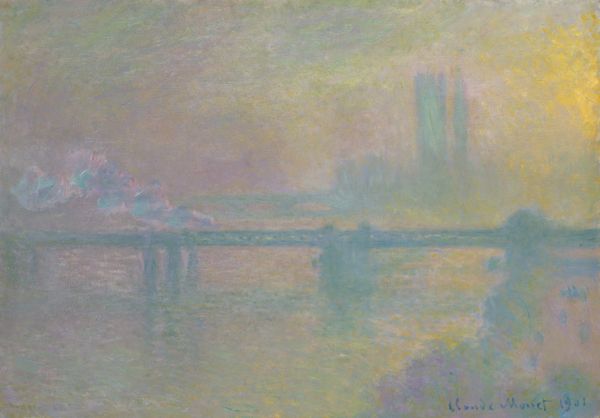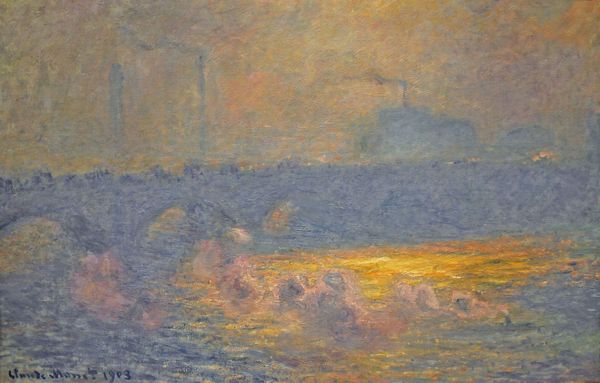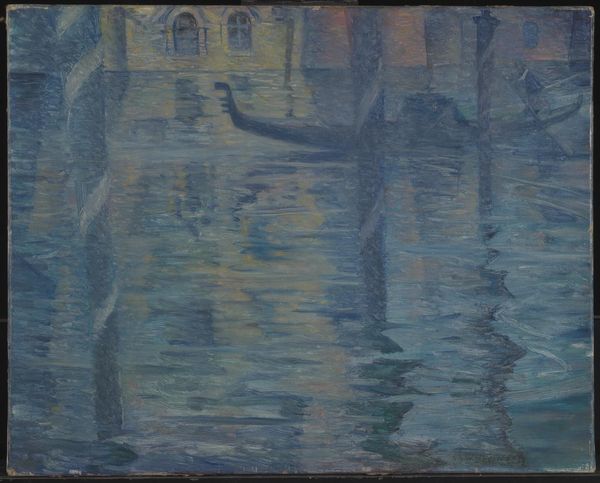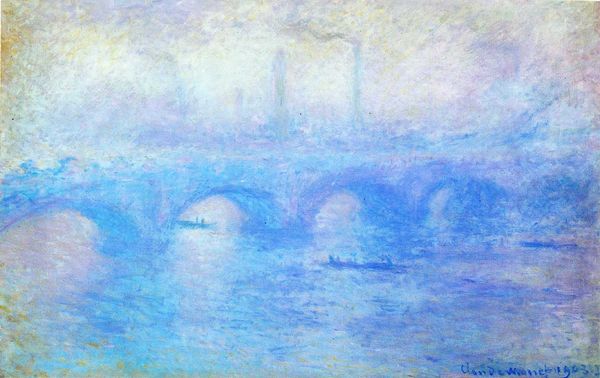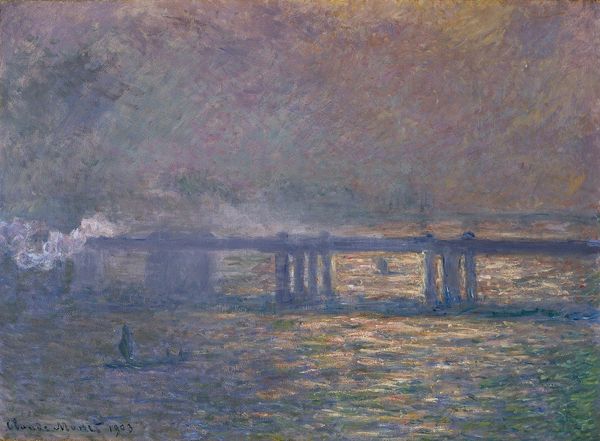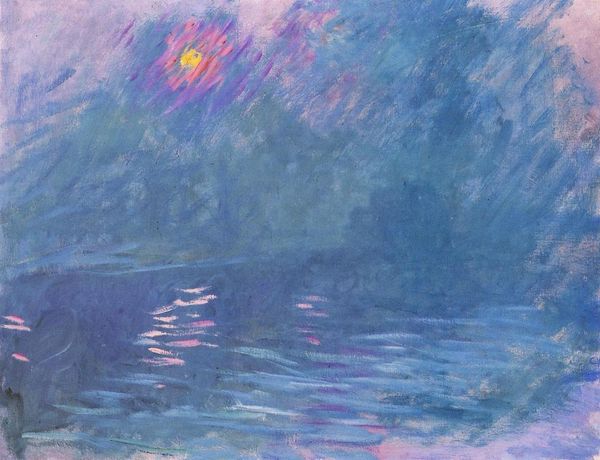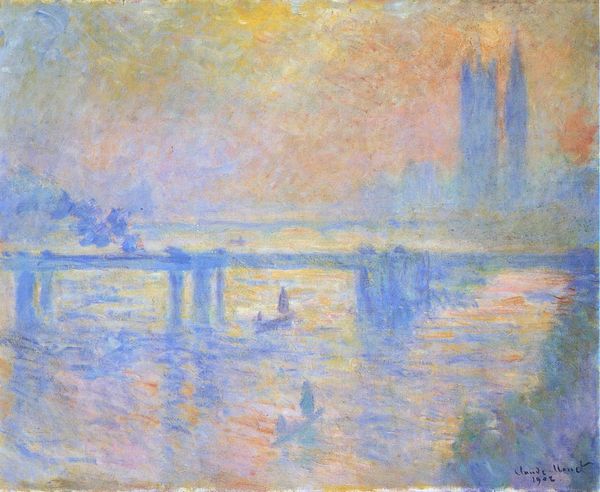
Copyright: Public domain
Editor: Here we have Claude Monet’s "Waterloo Bridge, Effect of Fog," painted in 1903, rendered in oil paint. The overwhelming blues and purples create such a hazy, almost dreamlike atmosphere. What do you make of Monet's choice to depict this London scene in such a way? Curator: This piece is really an investigation into how modernity and industry shaped not just the physical landscape of cities like London, but also altered people's perceptions. The fog isn’t just weather, it's a product of industrial pollution, obscuring and transforming the familiar. It becomes a motif, a mask veiling progress. Editor: So the fog itself carries a commentary on industrialization? Curator: Exactly! Monet wasn't simply painting pretty pictures. His repeated returns to the same scene allowed him to dissect how industrial byproducts and shifting conditions affected our apprehension of the urban world. Look at the barely-there brushstrokes and blurred forms—are they celebrating the dynamism of city life or hinting at the alienation it produces? Editor: I hadn't considered the social implications so directly before; I focused mainly on the aesthetic value. Curator: Monet forces us to acknowledge the societal costs alongside any perceived benefits of modernity. This piece challenges viewers to question the price of progress and to critically examine how industry impacts not just our environment, but also our very understanding of place. Editor: It's incredible how the fog, something so seemingly simple, can symbolize something so profound. I definitely see the painting differently now! Curator: Indeed. Understanding art in its social and historical context deepens our appreciation and encourages critical thought.
Comments
No comments
Be the first to comment and join the conversation on the ultimate creative platform.
